To witness Miami’s ability to simultaneously fulfill and upend its stereotypes, look no further than the Borscht Film Festival. It’s a chaotic, sleepless week of actual boating and two afterparties for every event, but it’s also consistently sublime, strangely paradisiacal. Arguably the most-hyped event of Borscht Diez, the festival’s tenth edition, was the Coral Orgy. Last Friday night, the Frank Gehry-designed New World Center became a maddening funhouse of virtual reality, art, and psychedelia, each room its own immersive microcosm.
The ‘Orgy’ took its named for its main event: a massive projection-mapping of Coral Morphologic’s overpowering visions of corals engaged in reproductive rituals throughout the building’s main performance hall. High above the seats, huge, curved walls became a kaleidoscopic array of neon sea creatures, with bean bag chairs where the symphony would be, and an otherworldly live score by none other than Animal Collective. Coral Morphologic, the hybrid bio-art studio responsible for creating the visuals, understands the profound significance of reefs. The musician/marine biologist duo have been creating trippy videos of organically neon corals in their natural habitats for years, creating art that draws attention to the importance of the ocean’s health through means as psychedelic as they are educational.
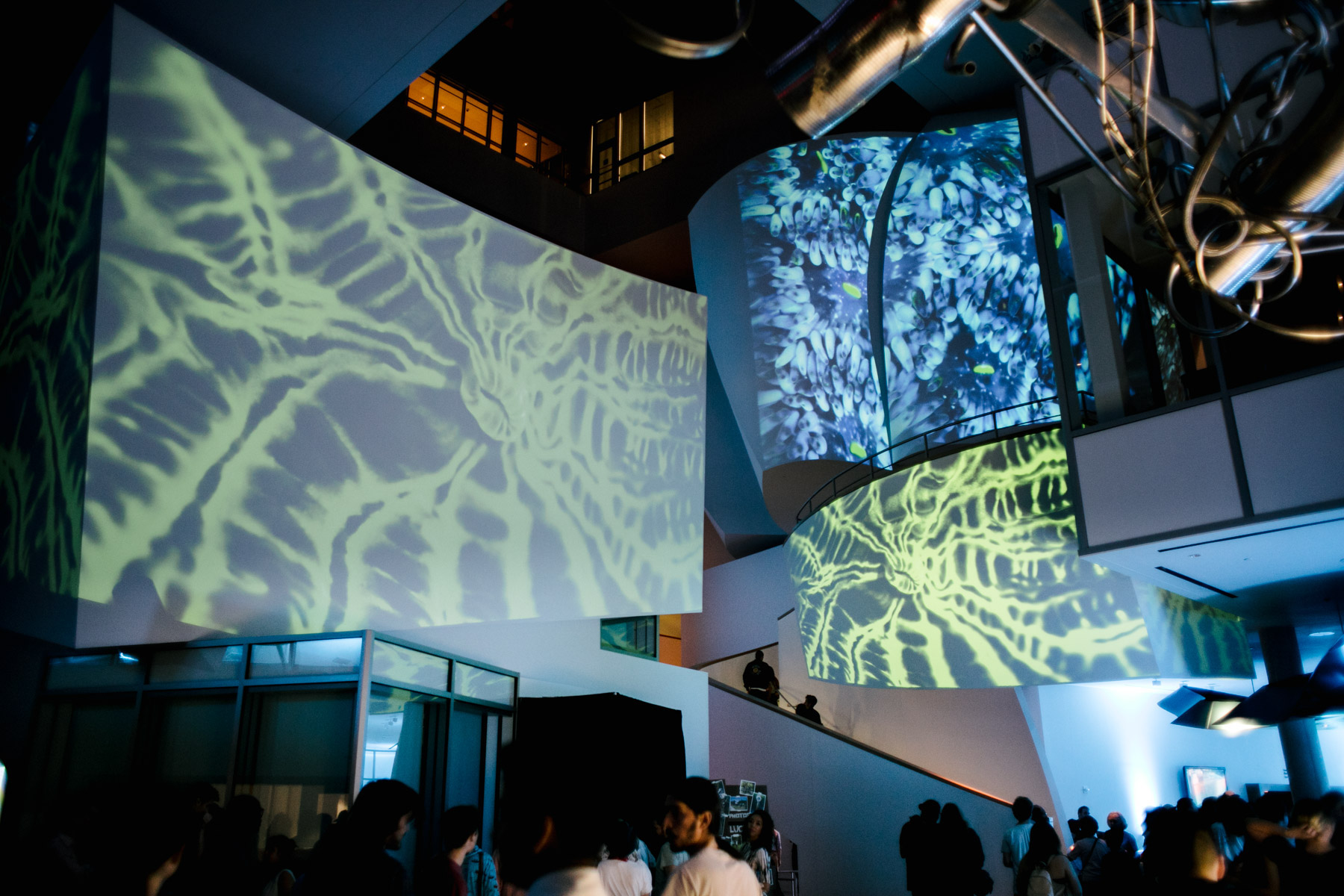
Corals projected in New World Center’s lobby.
There was much to explore that night at the New World Center, a sprawling structure whose exterior walls, facing the Miami Beach Soundscape Park, featured the coral projections as well. At the beginning of the night, producer and musician Nick León performed, while in a room nearby, a projection of artwork by Eric Cade Schoenborn mutated the den into a deep green, glitched-out Everglades forest.
New World Center practice rooms became salons for immersive virtual reality experiences, with guests lining up to take part one or two at a time. Some were wholly virtual, like Rachel Rossin‘s headset-based Time-Scrubbing, SIAG, which recalls the unsettling, ripped-to-pieces domesticity of Michelangelo Antonioni’s Zabriskie Point. Others were more physical, like Mattia Casalegno‘s The Open, which enveloped and isolated participants in a mask lined with the chemicals released by grass right after it’s been cut.
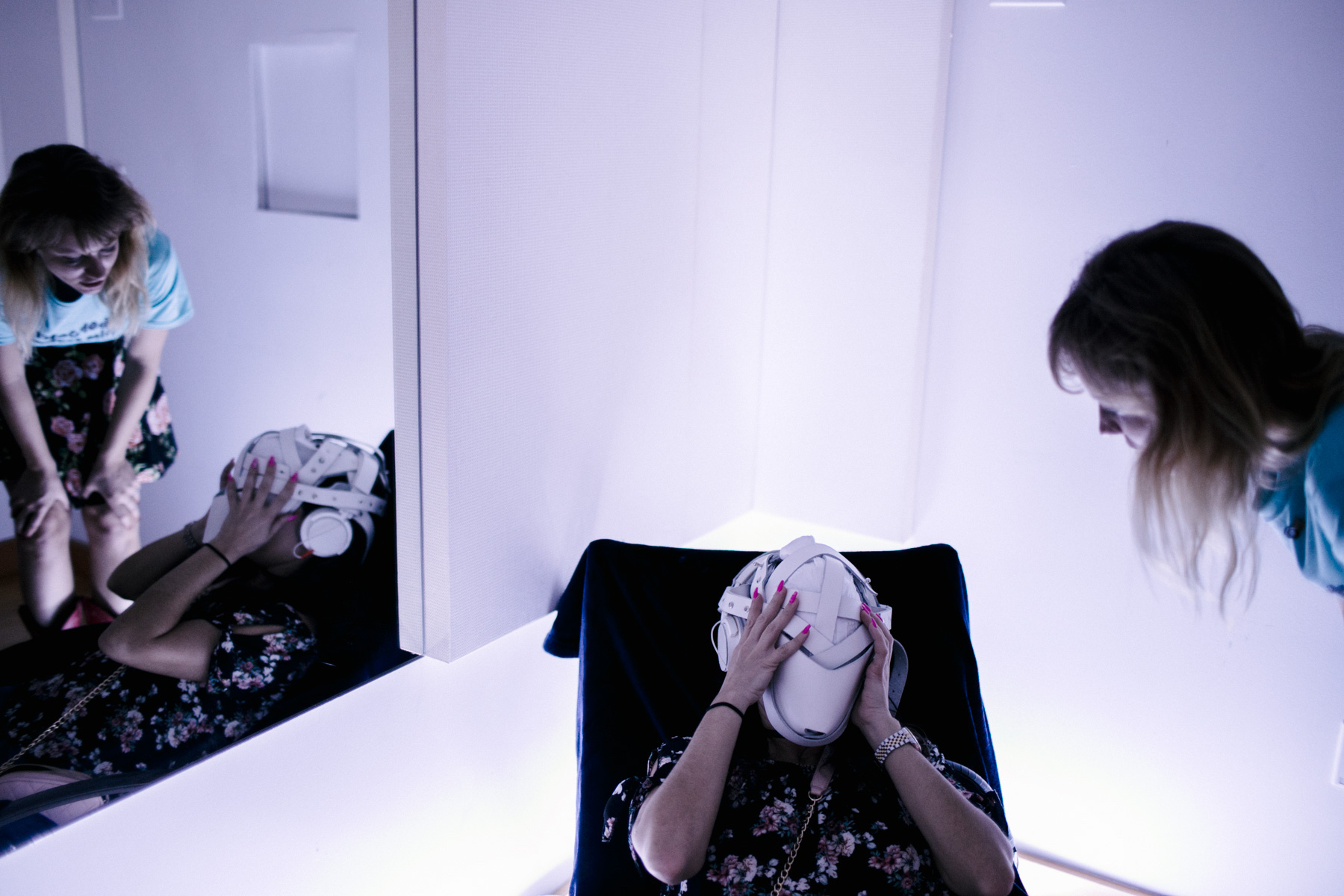
Mattia Casalegno, The Open.
Between the miniature rooms and the main hall, attendees were treated to videos and VR experiences by Jacolby Satterwhite, the Institute for New Feeling, the Digital Museum of Digital Art, Michael John Hancock III, Leo Castañeda. Upstairs, a VR experience by Mayer/Leyva + Tenderclaws invited guests to step into a bathtub and become George W. Bush, painter and bathtub enthusiast. It seemed impossible to experience it all, making it up to the viewer to curate their own night. Many people spent its entirety on the beanbags in the main hall. At one point, electronic musician and artist Hot Sugar, who performed before Animal Collective, asked the languid crowd, “Are you all still out there? Everybody’s so chill.”
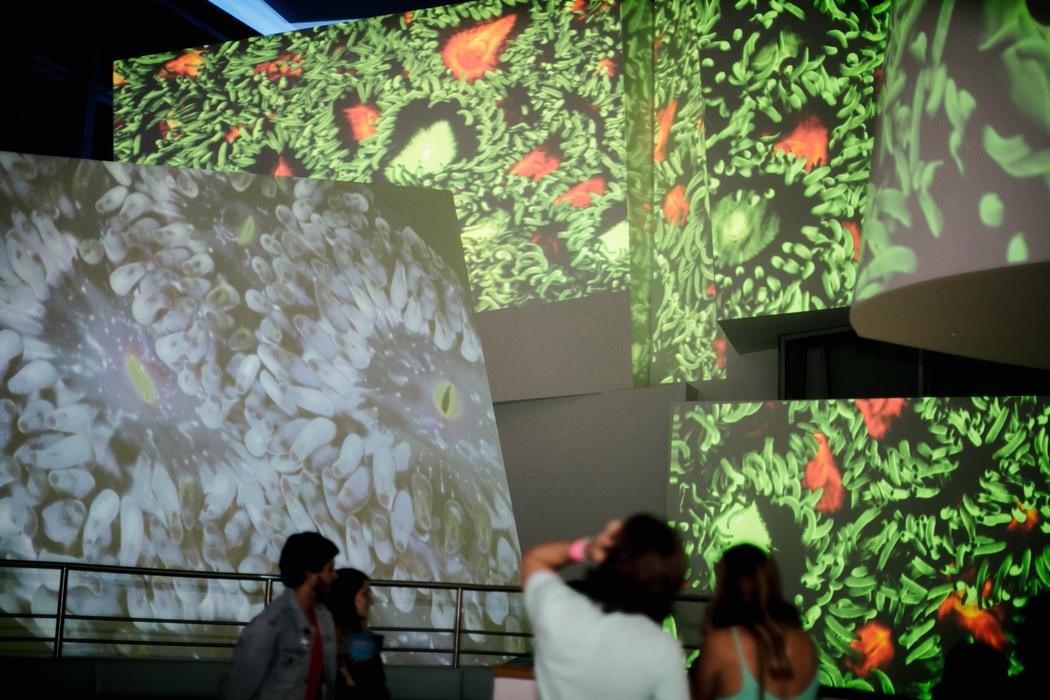
Coral projections in the New World Center’s lobby
On the other hand, performance artist and musician Joseph Keckler‘s opera, about a mushroom trip gone awry, was anything but chill—Keckler’s impeccable sense of timing had everyone on their toes. Then, Otto Von Schirach performed a ritual straight from the Bermuda Triangle. With Mayan pyramids projected onto a screen behind him, goddesses dressed in Santeria garb floated through the crowd, drawing white triangles on the audience’s foreheads. Von Schirach is known for bringing heavy Miami booty bass and ritualistic, Spanglish prayer seances to his performances, but this time he prepared us for the coral orgy (and the rest of the future) to come. “If you are from the Bermuda Triangle,” he declared, “your sperm is made of coral and your eggs are made of light. Bring forth the light beings into the world, to fight the evil reptile creatures spreading greed.”
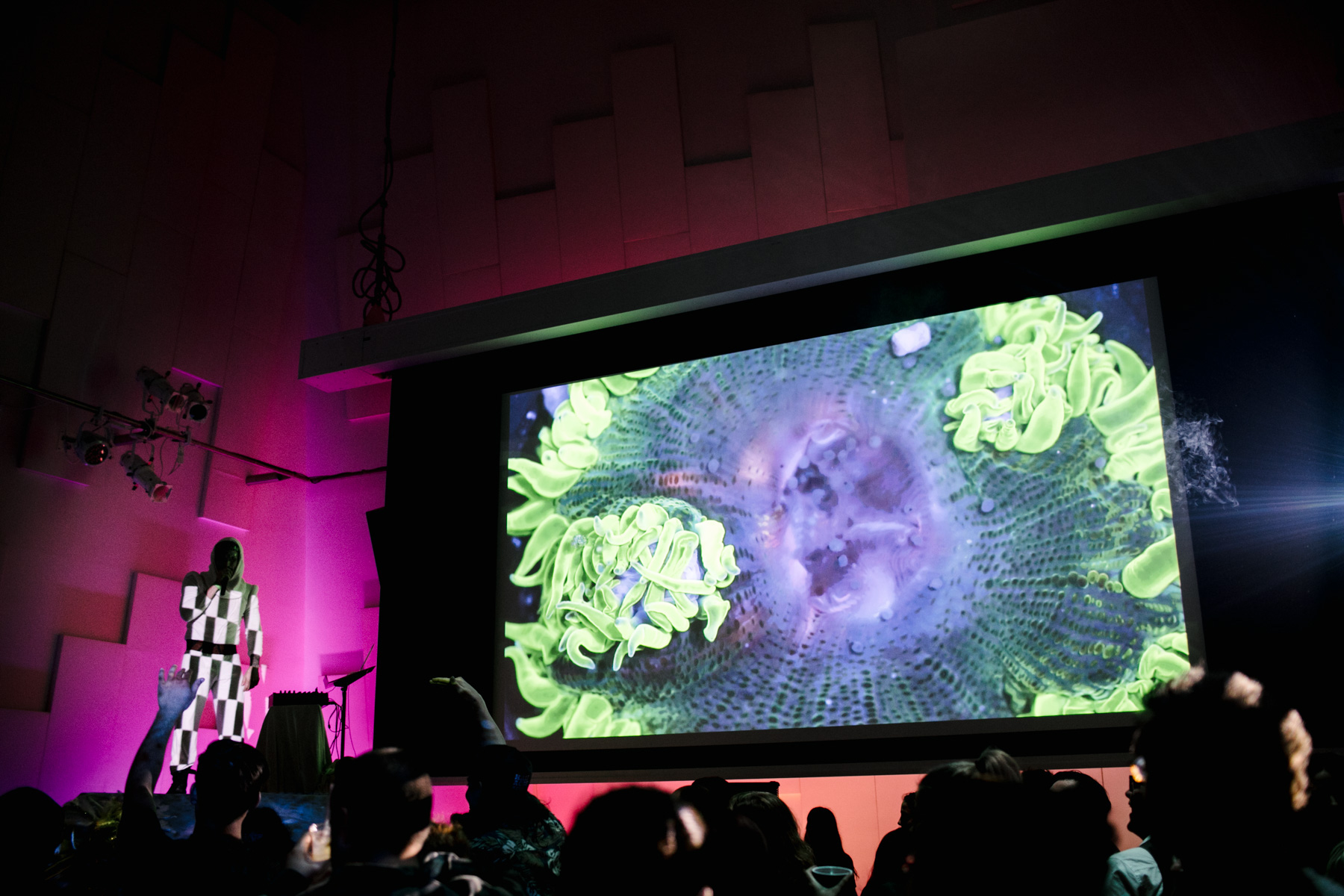
Otto Von Schirach’s bass ritual.
Following Von Schirach’s blessing, the main hall quickly filled up for Coral Orgy, but nothing, not the crowd nor the performance, remained static. In hues of pink, green, deep red, blue, the coral glowed nearly all the way to the ceiling, some looking like tall trees with stretched, curved hands for fingers, while others were globular and bulbous, swollen with color and folding into themselves, like replicating cells. For relatively unmoving bodies, corals are colorful and surprisingly fluid. They sometimes appeared to sing, their neon-green circular orifices opening and closing in serendipitous time with the music.
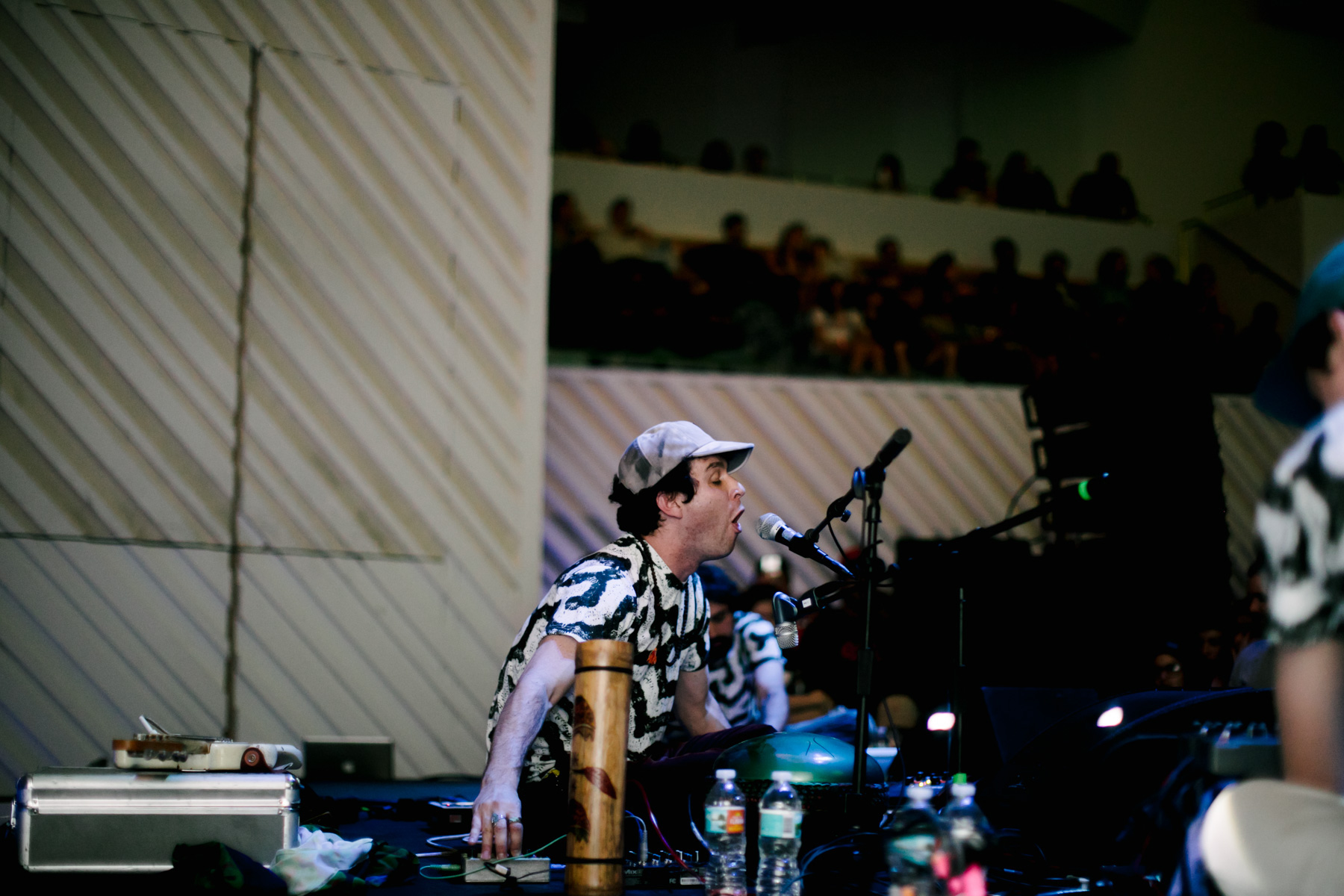
Animal Collective’s Avey Tare.
The soundtrack reflected their unexpected dynamics. Animal Collective, sans Panda Bear, built subtle, droning layers, vocals only audible enough to sound like chants, seemingly guiding the sounds by the corals’ movements. The music swayed, doubled back on itself, and, at other moments, released explosively. When the corals began their actual sex ritual, it looked like a scene from outer space, cosmic dust tendrils floating through the sea and connecting with each other. We even got a glimpse of the creation of new corals, white, star-like babies in the pitch black-blue of the sea.
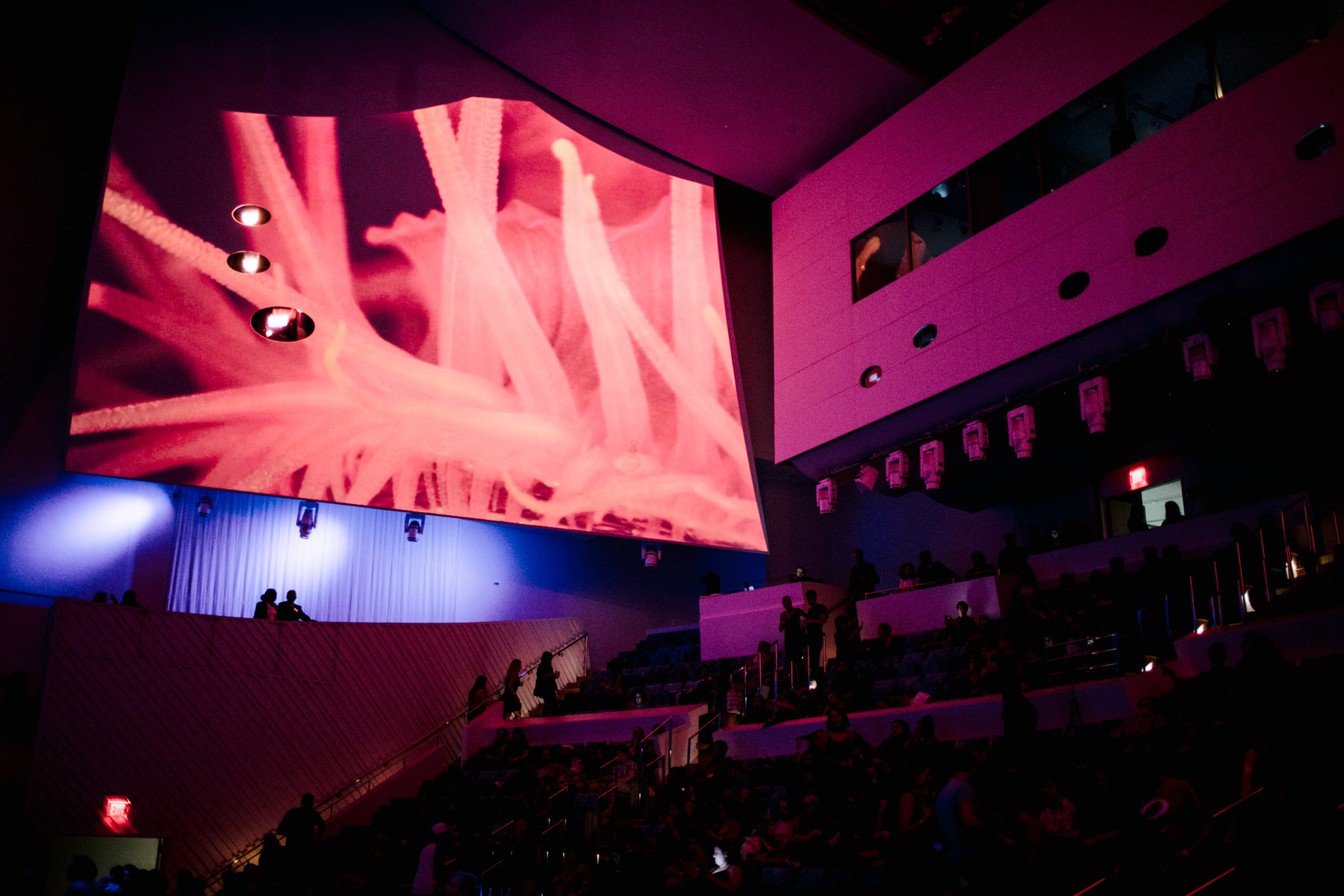
Coral Orgy.
Procreation at a festival that took death as its theme was poetic, not just biological. Borscht “Diez” translates to Borscht Ten, and the whole festival kicked off with a Viking funeral—every Borscht film was placed on a hard drive and set aflame. Says Lucas Leyva, Borscht co-founder, “Our city, specifically Miami Beach, is built on the bones of dead corals—limestone—and we make our buildings out of them. Miami Beach will be one of the first cities to be underwater [after sea level rise] and become a ‘lost city,’ and the corals are going to recolonize it and live on top of their ancestors’ bones. We were living on them for a while. Now, they’re going to live on our bones. Projection mapping their sex lives points to that cyclical nature of existing. It’s procreation. That implies some kind of hope, even if it’s not an anthropocentric hope. It is a hope for life in some capacity, and beautiful life.”
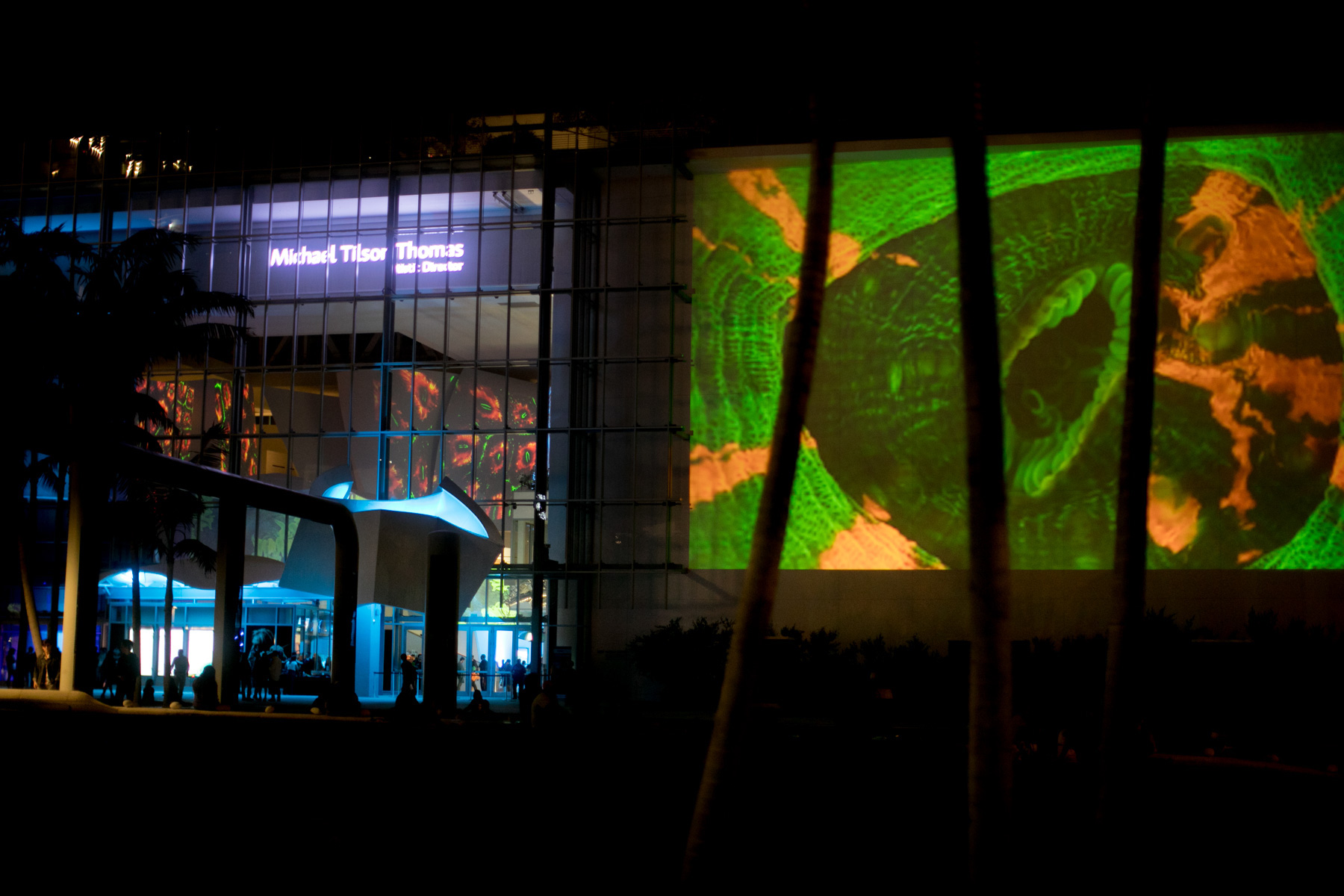
Corals projections in Soundscape Park.
Indeed, it was beautiful. But just as Miami as a setting may be a marker for climate change and sea-level rise, the corals, too, represented the dangers threatening the ocean. Says Colin Foord, one-half of Coral Morphologic, “Worldwide coral reefs are under threat from global warming, polluted runoff, and human overuse. Coral Morphologic believes that unlocking the secrets of coral sex is one of the most important scientific achievements we must pass on our quest towards preserving a sustainable future for our biosphere and all its inhabitants. Life on a future Earth without living coral reefs…is a risk that we cannot afford to pass on to unborn generations, who will be forced to contend with whatever we leave them long after we’re gone.”
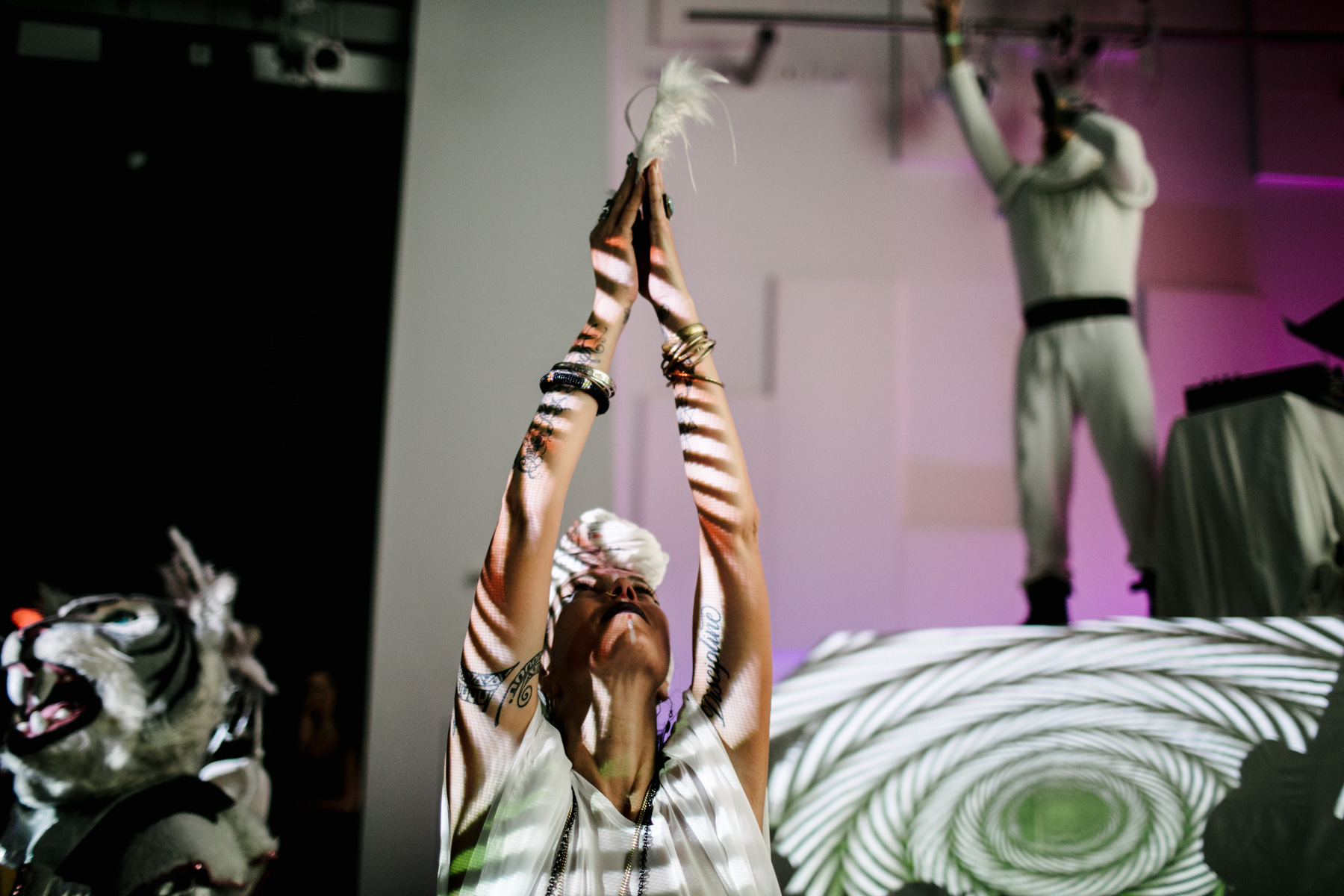
Otto Von Schirach’s bass ritual.
Click here to learn more about Coral Morphologic, and here for the Borscht Film Festival.




